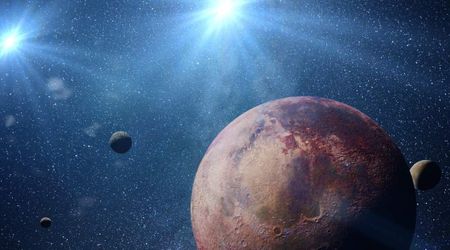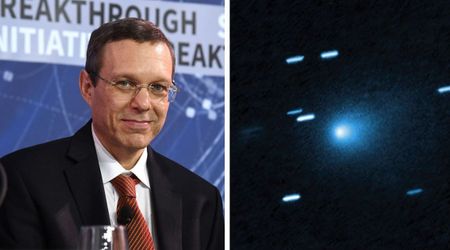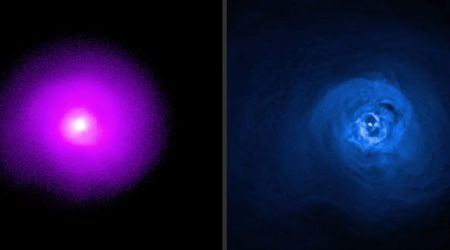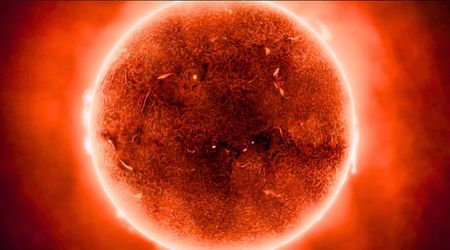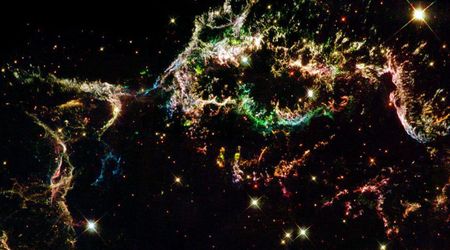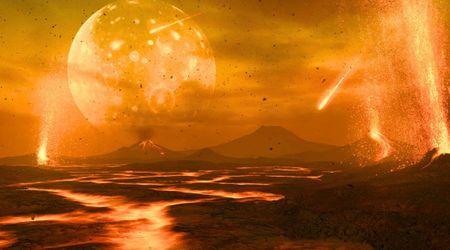Scientists plan to create artificial solar eclipses in space to uncover the Sun's hidden inner workings

A groundbreaking UK-led space mission, aiming to generate artificial solar eclipses in orbit, is set to be unveiled at the Royal Astronomical Society's National Astronomy Meeting 2025. This innovative project promises to revolutionize our understanding of the Sun's elusive inner workings, offering striking insights into space weather phenomena, according to the Royal Astronomical Society.
Dubbed the Moon-Enabled Sun Occultation Mission (MESOM), the initiative proposes deploying a compact satellite that would leverage the Moon's shadow to achieve the closest-ever observations of the Sun's atmosphere, specifically the inner solar corona. This region is typically only observable during brief total solar eclipses on Earth. Researchers from University College London (UCL)'s Mullard Space Science Laboratory, Aberystwyth University, and the University of Surrey Space Centre are spearheading the proposal. If approved, MESOM could operate for two years, providing data equivalent to 80 terrestrial eclipses, a significant leap forward for solar science.

MESOM's strategy involves positioning a mini-satellite in a unique orbit, allowing it to align with the Moon's shadow approximately every 29.6 days, coinciding with a synodic or lunar month. These alignments would effectively simulate total solar eclipses in space, extending observation times to a maximum of 48 minutes, which is ten times longer than typical Earth-based eclipses. Dr Nicola Baresi, a co-investigator from the Surrey Space Centre, highlighted the mission's ingenuity, stating, "MESOM capitalises on the chaotic dynamics of the Sun-Earth-Moon system to reproduce total solar eclipse conditions in space while using the Moon as a natural occulter."

Due to its innovative orbital design, MESOM would experience a total solar eclipse every synodic month as it naturally passes through the darkest part of the Moon's shadow. This would enable the satellite to achieve unprecedented proximity to the Sun, observing below 1.02 solar radii (441,165 miles). This is significantly closer than existing missions like the European Space Agency's (ESA) Proba-3, which observes from approximately 1.1 solar radii (475,348 miles).

MESOM is slated to carry a sophisticated suite of instruments, including a high-resolution coronal imager, a coronal mass spectrometer for analyzing coronal plasma composition, and a spectropolarimeter to study the Sun's magnetic field and phenomena like sunspots and flares. The team submitted the MESOM proposal to ESA's F-class mission call in May 2025 and anticipates a response later this year. If selected, the mission could launch between 2026 and 2028. F-class missions are characterized by their smaller scale, faster development, and cost-effectiveness, with a budget ceiling of €205 million (approx $240 million) and a development timeline of under eight years from selection to launch.
The challenge of studying the Sun's corona, historically limited by rare natural eclipses, is being redefined by ESA's Proba-3 mission. Launched on December 5, 2024, this pioneering "eclipse machine" has already delivered initial images, signaling a new era in solar observation. Proba-3 consists of two satellites flying in precise formation, with one acting as an artificial Moon to block the Sun for the other, which is equipped with a coronagraph.
Breaking space news: We have made our own solar eclipse in space! 🌘
— European Space Agency (@esa) June 16, 2025
Today, we release the first images from our Proba-3 mission, which flies two spacecraft in precise formation to create artificial solar eclipses in orbit.
Using a powerful instrument called a coronagraph,… pic.twitter.com/mwOiwY2doS
This eliminates the need for geographical luck or long waits for total solar eclipses, which typically occur only once every 366 years for any given location on Earth. The mission's early success, demonstrated by its first formation flight on May 23 and image release on June 16, sets a crucial precedent for solar observations like those proposed by MESOM.
